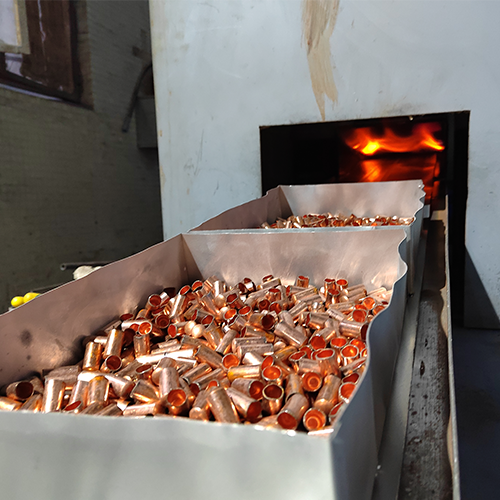Why does the bullet copper tube need annealing heat treatment
Oct. 09, 2025
The core purpose of annealing heat treatment for bullet copper tubes is to reduce hardness, increase plasticity, refine the microstructure, and relieve stress, thereby improving the material's processing and mechanical properties. A detailed analysis is as follows:
1. Reducing Hardness and Improving Plasticity
Processing Requirements: Bullet copper tubes undergo cold working processes such as drawing, bending, and stamping during manufacturing. Excessive hardness can increase processing resistance, exacerbate tool wear, and even cause cracking or breakage.
Annealing Effects: Annealing rearranges the copper tube's grain structure, significantly reducing hardness and significantly improving plasticity. This makes the tube more easily deformable during subsequent processing, reduces processing defects, and improves yield.
2. Grain Refinement and Microstructure Adjustment
Microstructural Defects: During the casting or forging process, copper tubes may develop microstructural defects such as coarse grains and segregation due to rapid cooling or stress concentration. These defects reduce the material's strength and toughness.
Annealing: Annealing involves heating to an appropriate temperature and holding the temperature to recrystallize the grains, creating a fine and uniform grain structure. Annealing also eliminates microstructural segregation, improving the material's uniformity and consistency.
3. Eliminating Residual Stress and Stabilizing Dimensions
Source of Stress: During processing, residual stress builds up within the copper tube, leading to dimensional instability and even deformation or cracking during storage or use.
Annealing: Annealing releases residual stress through slow cooling, significantly improving the dimensional stability of the copper tube. This is crucial for bullet components, which require high-precision fit.
4. Preparing for Subsequent Heat Treatment or Processing
Process Integration: Annealing can serve as an intermediate step, providing a good structural foundation for subsequent heat treatment processes such as quenching, tempering, or surface treatment.
Performance Optimization: Annealing adjusts the microstructure of the copper tube, making it easier to achieve the ideal combination of properties, such as strength, toughness, and wear resistance, during subsequent processing.










